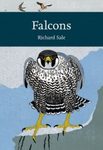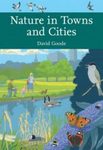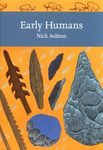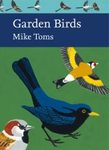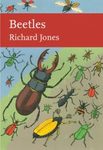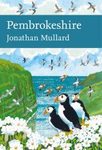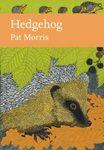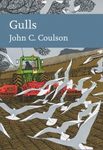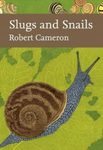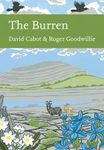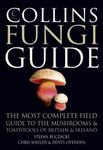![Scotland Scotland]()
Click to have a closer look
About this book
Biography
Related titles
About this book
Harnessing recent developments in computer technology, the latest New Naturalist volume uses the most up-to-date and accurate maps, diagrams and photographs to analyse the diverse landscapes of Scotland. Most people share an enthusiasm for beautiful and breathtaking scenery, explored variously through the physical challenge of climbing to the top of the tallest mountains or the joy of viewing the work of a painter; but while easy to admire from a distance, such landscapes are usually difficult to explain in words. Peter Friend highlights the many famous and much loved natural landscapes of Scotland, ranging from the rolling, agricultural lowlands of the east to the wild and rugged mountains of the west, from the whitewashed villages of Galloway to the traditional fishing ports of the east. He provides detailed explanations for the wide variety of natural events and processes that have caused such an exciting range of surroundings. Setting apart the topography that has resulted from natural rather than man-made occurrences, Friend focuses on each region individually, from the windswept islands that fringe the Atlantic to the sheltered straths of Perthshire, and explains the history and development of their land structures through detailed descriptions and colourful diagrams. Illustrated with beautifully detailed photographs throughout, Scotland comprehensively explores the formation of these wonderful landscapes that are so universally admired.
Customer Reviews
Biography
Peter Friend retired in 2001 after a career spent teaching and researching in the Department of Earth Sciences at the University of Cambridge. His boyhood was spent in Scotland, where he became fascinated by the variety and beauty of the natural landscapes. From his base in Cambridge, he carried out research programmes in Spitsbergen, Greenland, Spain, Pakistan and India, and became increasingly aware of the importance of rivers in shaping landscapes. He is currently Chairman of the Friends of the Sedgwick Museum of Earth Sciences and Emeritus Fellow of Darwin College, Cambridge.
Monograph
Out of Print
By: Peter Friend(Author)
466 pages, colour photos, colour illustrations, colour maps
Customer Reviews:
Scotland rocks!
by S.W. Mott in the United Kingdom (13/02/2012)
The latest volume in this series has been written by Peter Friend and is a review of the rocks and landscapes of Scotland. Collins make it clear that the book is about the rocks, earth history and landscapes of Scotland. The book does not set out to be a comprehensive, all-inclusive survey of Scotland's natural history – an impossible task to achieve in a single volume. Indeed, for fuller accounts of Scotland's flora and fauna, weather, environments and habitats, one must refer to earlier volumes in the series – such as 76 The Hebrides, 88 Loch Lomondside, 101 Galloway and the Borders and the earlier, now out of date, volumes on Shetland and Orkney. NN119 provides a more than adequate overview of the landscapes that shape Scotland and its natural history.
For the geologist there are more detailed and scientific texts available, including the British Geological Survey (BGS) Regional Guides and material from the Geological Society and Scottish Museums. However, where this New Naturalist volume scores is in its organisation, presentation, and collation of material from a variety of sources in a fresh and compelling way. It has been thoroughly researched and meticulously brought together.
Peter Friend uses the same format and scaffolding for this new volume as he used in his volume Southern England (Collins NN 108). He makes good use of modern computerised technology to provide effective diagrams, sections and maps to explain the geology and geomorphological processes. No diagram or text figure is too small to read; the aerial photos are carefully selected and add substantially to the understanding of the features described.
The first five chapters are about geological processes and landform development. Chapters 2 and 3 borrow heavily from Peter Friend's other New Naturalist book "Southern England". And why not? Processes don't change north of the border, and Peter Friend applies them to the Scottish setting. The remainder of the book divides Scotland into regions and each chapter follows the same pattern – Stories from the bedrock, Making the landscape and in some chapters – human influence on the landscape. This latter section does not occur in all the regional chapters, yet I'm sure human influence has been felt in all areas of Scotland and their landscapes in some form or other.
This chapter structure works well and is consistently applied, making the book stand out among others by presenting the current state of knowledge and understanding in a logical, approachable and co-ordinated way. The photographs are excellent throughout, add greatly to understanding and their reproduction seems accurate and sharp.
Some assumptions are made – such as of the reader's familiarity with earth science terminology, although much is explained in the text and the diagrams help enormously. However, I do wonder if a small glossary of earth science terms could have been provided. I also found Dr Friend's use of the geological stratigraphic term "tertiary " in its volcanic province context both inconsistent and slightly dated: the Tertiary Volcanic Province is now known as the Palaeogene Volcanic District. Confusingly for the non-geologist reader, Dr Friend refers in "Further Reading" to the BGS Regional Guide "Palaeogene Volcanic Districts of Scotland" by Henry Emeleus; yet in the New Naturalist Volume, he more often refers to these districts as "Tertiary". Anyone unaware that these terms are almost synonymous and that Palaeogene is the preferred term, will be at a loss. Indeed, in the Foreword to the BGS Regional Guide, published in 2005, it states "The term 'tertiary' is no longer approved".
It is a pity that up-to-date nomenclature could not have been applied consistently to NN Scotland.
As a geologist wanting an overview and a compilation of both geological and geomorphological material, I shall be using this New Naturalist whenever I need to obtain a wider view of Scotland's complicated earth history or an idea of the surface landscape features of a particular region within the country.
Dr Friend has provided us with a sound piece of writing, imaginatively produced and thoughfully presented. NN Scotland is a worthy addition to the this long-running series.
















